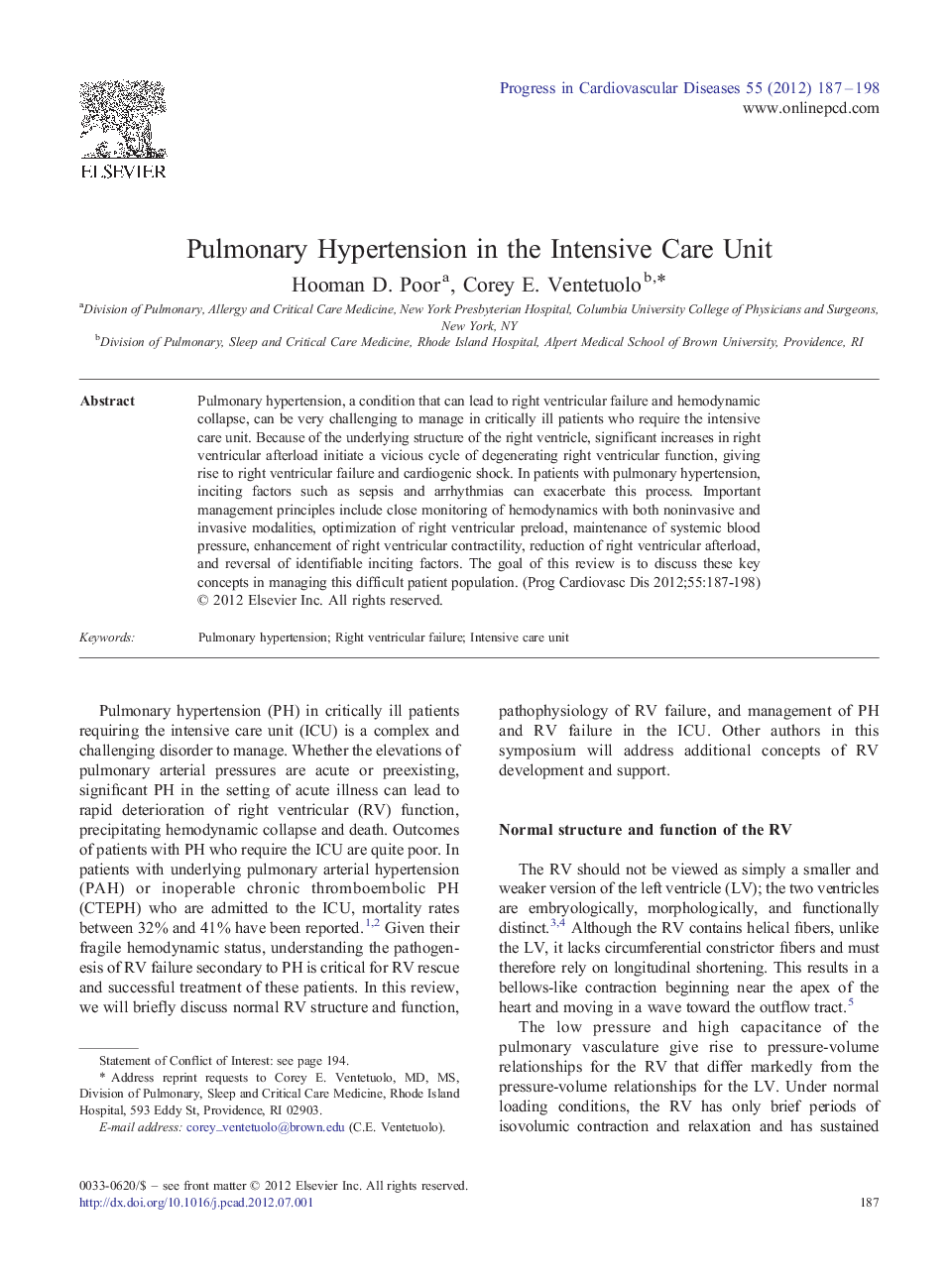| Article ID | Journal | Published Year | Pages | File Type |
|---|---|---|---|---|
| 3006771 | Progress in Cardiovascular Diseases | 2012 | 12 Pages |
Pulmonary hypertension, a condition that can lead to right ventricular failure and hemodynamic collapse, can be very challenging to manage in critically ill patients who require the intensive care unit. Because of the underlying structure of the right ventricle, significant increases in right ventricular afterload initiate a vicious cycle of degenerating right ventricular function, giving rise to right ventricular failure and cardiogenic shock. In patients with pulmonary hypertension, inciting factors such as sepsis and arrhythmias can exacerbate this process. Important management principles include close monitoring of hemodynamics with both noninvasive and invasive modalities, optimization of right ventricular preload, maintenance of systemic blood pressure, enhancement of right ventricular contractility, reduction of right ventricular afterload, and reversal of identifiable inciting factors. The goal of this review is to discuss these key concepts in managing this difficult patient population.
